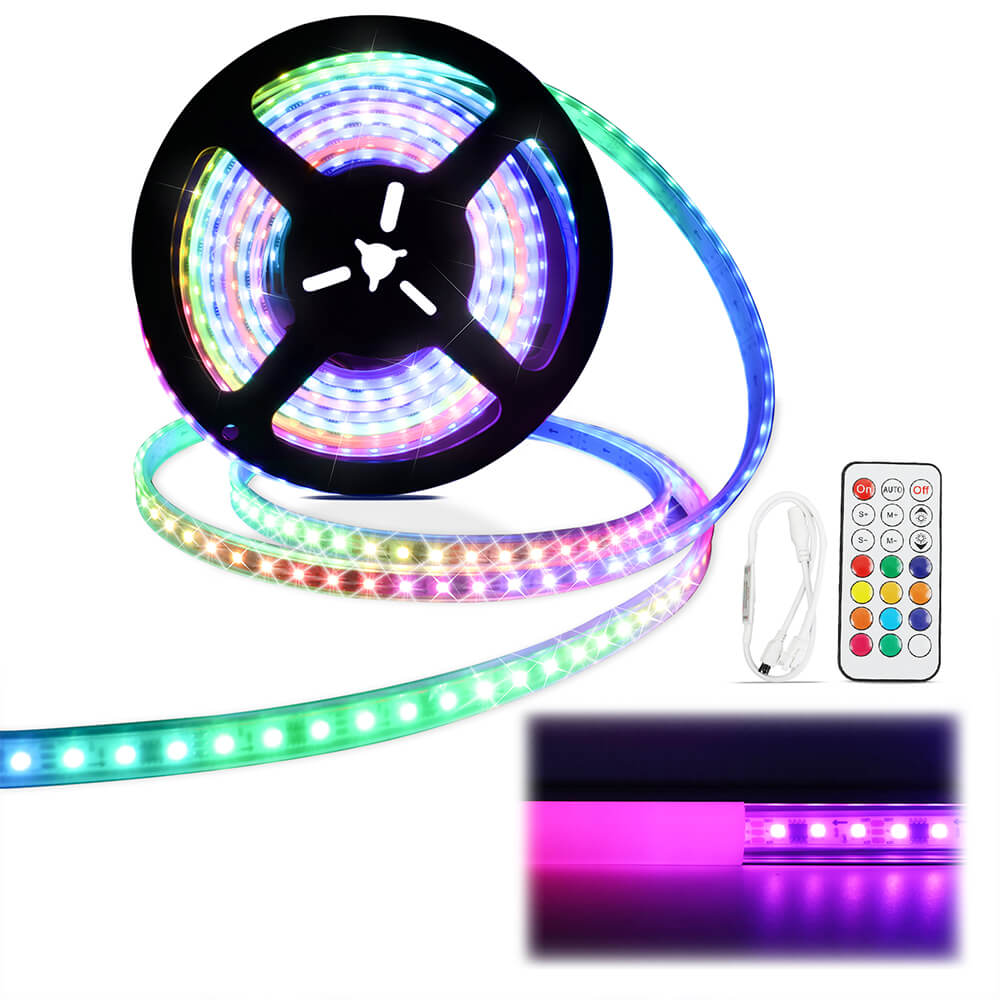Do LED Strips Waste A Lot Of Electricity?
Oct 19,2023 | Muzata LED Channel
Introduction
LED strips have gained immense popularity in recent years as a versatile and decorative lighting option for homes, businesses, and various other spaces. However, there is a common misconception that LED strips consume a significant amount of electricity. In this blog post, we will delve into the truth behind this notion and explore the energy efficiency of LED strips. By the end, you will have a clear understanding of whether LED strips waste a lot of electricity or not.
LED Strip Electricity Consumption
To comprehend the electricity usage of LED strips, it's essential to first understand how they work. LED stands for Light Emitting Diode, which is a semiconductor device that emits light when an electric current passes through it. LED strips consist of multiple individual LED chips mounted on a flexible circuit board, creating a linear strip of lighting.
One of the main advantages of LED technology is its energy efficiency. LEDs require significantly less power compared to traditional incandescent or fluorescent bulbs to produce the same amount of light. LED strips can convert a higher percentage of electrical energy into visible light, resulting in reduced energy consumption and lower electricity bills.

LED strips vs. Traditional Lighting Options
When comparing LED strips with traditional lighting options like incandescent or fluorescent bulbs, the difference in energy usage becomes evident. Incandescent bulbs produce light by heating a filament inside the bulb, which consumes a substantial amount of electricity. On the other hand, fluorescent bulbs use a combination of gas and mercury vapor to create UV light, which is then converted into visible light.
LED strips, however, do not rely on heating elements or gases to produce light. Instead, they utilize advanced semiconductor technology that directly converts electrical energy into light. This fundamental difference in technology makes LED strips far more efficient in terms of electricity consumption.
Common Misconceptions
Despite the energy-efficient nature of LED strips, there are still misconceptions surrounding their electricity usage. One common belief is that LED strips consume a lot of electricity because they are bright and vibrant. However, it's crucial to understand that brightness and energy consumption are not directly proportional.
LED strips offer various brightness levels, allowing users to choose the desired level of illumination. While brighter LED strips may consume slightly more electricity, the difference is negligible compared to traditional lighting options. Additionally, advancements in LED technology have resulted in more energy-efficient LED strip variants, minimizing their electricity consumption even further.
Calculating LED Strip Power Consumption
To calculate the electricity usage of LED strips, you can use the following formula: Electricity Usage (kWh) = Power (Watts/m) x Time (Hours) x Length(m) / 1000
For instance, if you have a 5-meter LED strip with a power rating of 12 W/m and you use it for 4 hours a day, the calculation would be: Electricity Usage (kWh) = 12 x 5 x 4 / 1000 = 0.24 kWh the energy consumption can be significantly lower compared to traditional lighting options.
Strategies to Optimize LED Strip Energy Efficiency
To optimize LED strip energy efficiency, consider implementing the following strategies:
Choosing the Right LED Strip for Specific Applications
Select LED strips with the appropriate brightness level, color temperature, and wattage rating for the intended application. Consider the area size, lighting requirements, and personal preferences to make an informed decision.
Utilizing Controllers and Timers for Smart Energy Management
Controllers and timers offer enhanced control over LED strip power consumption. They allow you to schedule lighting cycles, automate on/off timings, and adjust brightness levels, further optimizing energy efficiency.
Tips for Proper Installation and Maintenance
Proper installation and maintenance play a vital role in maximizing LED strip energy efficiency. Ensure correct wiring, adequate heat dissipation, and regular cleaning to prevent any issues that may affect performance and electricity consumption.
Conclusion
After a comprehensive exploration of LED strip electricity consumption, it is evident that LED strips do not waste a lot of electricity. Their lower energy consumption, coupled with their long lifespan and environmental benefits, make them an excellent choice for those seeking energy-efficient lighting options.
By understanding the factors influencing LED strip electricity usage and implementing strategies to optimize energy efficiency, you can enjoy the aesthetic appeal and practical advantages of LED strips while minimizing your carbon footprint and electricity costs.
Embrace the energy-saving potential of LED strips and make a positive impact on both your wallet and the environment. Choose quality LED strips, control power consumption wisely, and experience the benefits of efficient, eco-friendly lighting solutions.

.jpeg?w=800&h=600)

